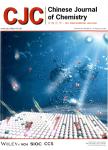Determination of Some Trace Metals in Environmental Samples by Flame AAS Following Solid Phase Extraction with Amberlite XAD-2000 Resin after Complexing with 8-Hydroxyquinoline
Determination of Some Trace Metals in Environmental Samples by Flame AAS Following Solid Phase Extraction with Amberlite XAD-2000 Resin after Complexing with 8-Hydroxyquinoline作者机构:Department of Chemistry Faculty of Arts & Sciences Karadeniz Technical University 61080 Trabzon Turkey Department of Chemistry Giresun Faculty of Arts & Sciences Karadeniz Technical University 28049 Giresun Turkey Department of Chemistry Faculty of Arts & Sciences Pamukkale University 20020 Denizli Turkey Department of Chemistry Faculty of Arts & Sciences Erciyes University 38039 Kayseri Turkey
出 版 物:《Chinese Journal of Chemistry》 (中国化学(英文版))
年 卷 期:2007年第25卷第2期
页 面:196-202页
核心收录:
学科分类:083001[工学-环境科学] 0830[工学-环境科学与工程(可授工学、理学、农学学位)] 08[工学] 0703[理学-化学]
基 金:research grant from Karadeniz Technical University of Turkey
主 题:water and vegetable sample trace metal preconcentration amberlite XAD-2000 FAAS 8-hydroxyquinoline
摘 要:A procedure for preconcentration of Mn(Ⅱ), Fe(Ⅱ), Co(H), Cu(Ⅱ), Cd(Ⅱ), Zn(Ⅱ), Pb(Ⅱ) and Ni(Ⅱ) based on retention of their complexes with 8-hydroxyquinoline (HQ) on Amberlite XAD-2000 resin in a column was proposed for the analysis of environmental samples by flame AAS. Various parameters such as pH, eluent type, volume, concentration, flow rate and volume of sample solution, and matrix interference effect on the retention of the metal ions were investigated. The optimum pHs for the retention of metal complexes in question were about 6 except for Mn^2+ for whose value is 8. The loading capacity of the adsorbent for these metals and their recoveries from the resin under the optimum conditions were in the range 6.82-9.26 mg·g^-1 and 95%-101%, respectively. The enrichment factor was calculated as 100 and the limit of detection was in the range 0.3-2.2 μg·L^-1 (n=20, blank+ 3s). The proposed enrichment method was applied to tap water, stream water and vegetable samples. The validation of the procedure was carried out by analysis of certified reference material and standard addition. The analytes were determined with a relative standard deviation lower than 6% in all samples.



